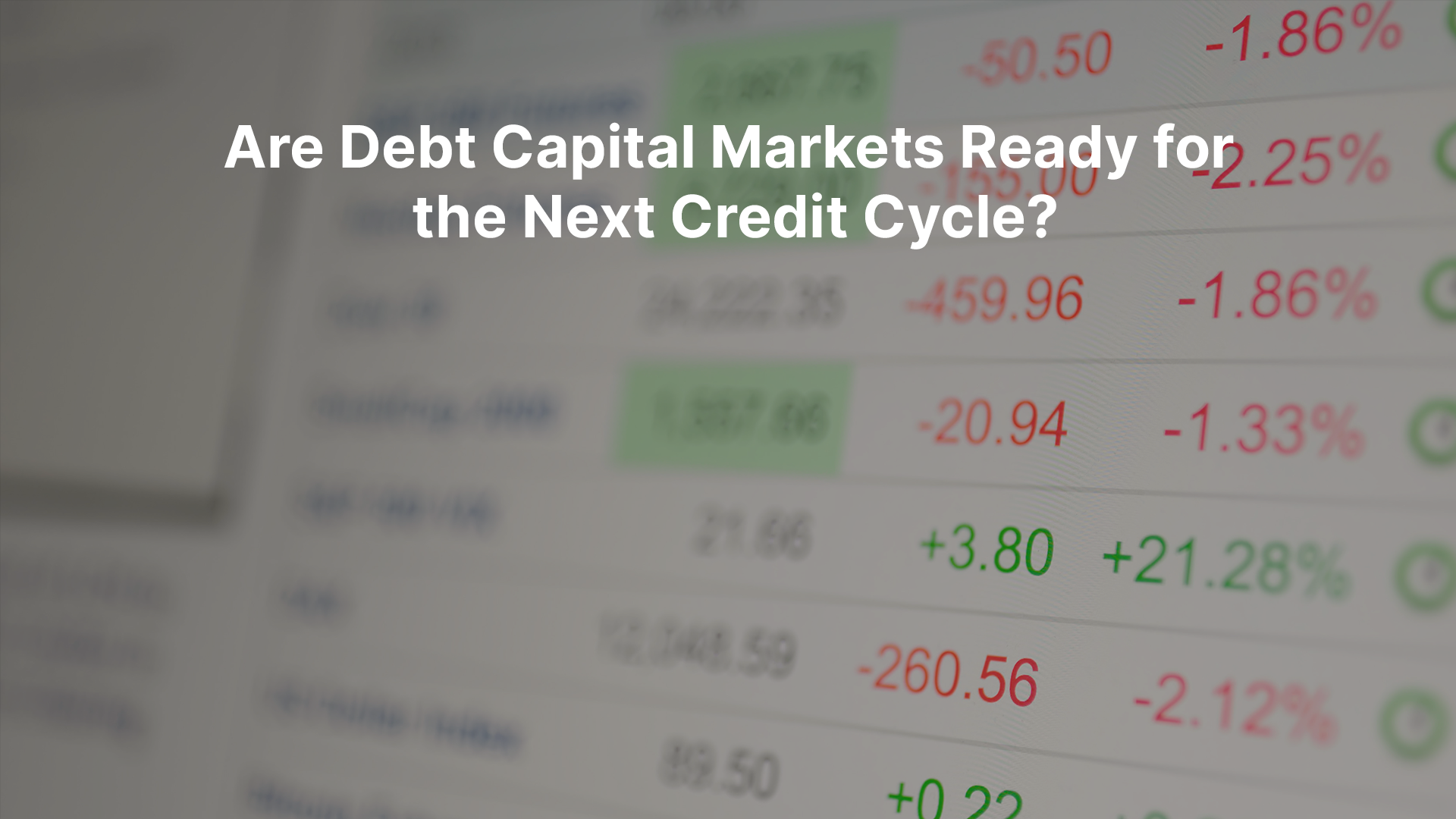Debt capital markets (DCM) have been riding a wave of transformation over the past decade, shaped by ultra-low interest rates, abundant liquidity, and unprecedented central bank interventions. But cycles don’t stay still. As inflationary pressures, higher rates, and shifting investor appetites redefine the financial landscape, the big question emerges: are debt capital markets ready for the next credit cycle?
Let’s unpack where things stand, what risks are building, and where opportunities might lie for issuers, investors, and intermediaries.
The Credit Cycle Reset
Credit cycles typically move through four broad phases: expansion, downturn, repair, and recovery. For much of the last decade, markets were stuck in an unusually long expansion fuelled by cheap money and easy access to credit. But the tide began to turn with central banks hiking rates to combat inflation, and the cost of borrowing has surged.
This marks the early stages of a potential downturn. Companies that refinanced during the low-rate era are now facing maturities at much higher yields. Investors, in turn, are becoming more selective, reassessing creditworthiness, and demanding stronger covenants.
The challenge for issuers is clear: accessing capital won’t be as straightforward as it was during the liquidity boom. The opportunity, however, is equally clear: those who can demonstrate resilient balance sheets and credible strategies will find investors willing to pay attention, even if pricing is tougher.

Structural Shifts in the Market
The next credit cycle won’t simply repeat the past. Several structural changes in debt capital markets are likely to shape how the cycle plays out.
1. Rising Cost of Capital
With benchmark rates elevated and spreads widening, the cost of capital has reset. This impacts not just weaker credits but also investment-grade issuers, who may now have to consider alternative funding strategies such as hybrid instruments or private placements.
2. ESG Integration
Sustainable finance has moved from the margins to the mainstream. Investors increasingly demand transparency on ESG metrics, and issuers that can demonstrate alignment with green or social mandates will stand out. Even in a tougher environment, ESG-labelled bonds continue to attract resilient demand.
3. Regional Divergence
While developed markets like the UK, Europe, and the US wrestle with slower growth and persistent inflation, emerging markets present a more mixed picture. Some economies are grappling with debt sustainability issues, while others are leveraging demographic and productivity trends to attract capital. Cross-border issuance is likely to see renewed activity, but investors will weigh political and FX risks more carefully.
4. Technology and Efficiency
Digital platforms are streamlining issuance processes, from book-building to settlement. The rise of tokenisation and blockchain-enabled debt instruments is still in its infancy, but over the coming cycle, technology could lower costs and broaden access to new classes of investors.

Risks on the Horizon
As always, risk is the defining characteristic of the credit cycle. The next downturn may not resemble the global financial crisis, but several vulnerabilities are worth flagging:
- Refinancing walls: Large volumes of corporate and sovereign debt will mature over the next three to five years, much of it originally issued at historically low rates. The refinancing challenge could expose weaker credits.
- Private credit bubble: The rapid expansion of private credit has provided an alternative to public markets, but questions remain about liquidity and transparency if defaults rise.
- Geopolitical tensions: From trade wars to regional conflicts, global uncertainty can quickly impact investor sentiment and cross-border deal flows.
- Banking system pressures: Tighter regulation and capital requirements may limit banks’ ability to intermediate, placing more emphasis on capital markets as a source of funding.
Opportunities for Issuers and Investors
Despite the challenges, the next credit cycle also offers opportunities. In fact, periods of reset often separate the resilient from the vulnerable and reward those who adapt early.
- Higher yields for investors: After years of low returns, fixed-income investors now have access to more attractive yields, potentially rebalancing portfolios towards bonds.
- Strategic issuance: Issuers who plan proactively—by laddering maturities, diversifying funding sources, or tapping ESG-linked products—can differentiate themselves.
- Cross-border deals: As capital searches for yield and diversification, cross-border issuance will remain critical. Well-structured transactions with transparent disclosure can attract global investors, even in volatile times.
- Innovation: From sustainability-linked bonds to digital assets, new structures and formats can help issuers access niche pools of capital and investors access differentiated opportunities.

The Role of Collaboration and Networking
Navigating the next credit cycle won’t be a solitary exercise. Issuers, investors, and intermediaries will need more dialogue, more information-sharing, and more cross-border collaboration. Market participants that are plugged into the right networks and forums will be best positioned to adapt.
Events, roundtables, and networking platforms are set to play a critical role in helping stakeholders make sense of shifting dynamics. In a market where conditions can turn quickly, trusted relationships and timely insights are as valuable as pricing power.
So, Are Debt Capital Markets Ready?
In truth, readiness depends on perspective. On the one hand, higher costs, refinancing pressures, and geopolitical uncertainty point to stress ahead. On the other, stronger fundamentals in certain sectors, greater investor discipline, and ongoing innovation suggest markets are better equipped than in past downturns.
What this really means is that the next credit cycle will be a test. Issuers must prove resilience. Investors must sharpen their analysis. And intermediaries must provide efficient, transparent access to capital. The winners will be those who treat the cycle not as a threat but as an opportunity to re-price risk more rationally and to rebuild trust in the value of capital markets.
At Global Banking and Markets (GBM), we understand that the debt capital markets are entering a new phase—one defined by both uncertainty and opportunity. Our events and networking infrastructure is designed to connect issuers, investors, and intermediaries across borders, helping them build the relationships and insights needed to navigate the next cycle.
Whether you’re an issuer planning your refinancing strategy, an investor seeking access to global opportunities, or a financial intermediary facilitating cross-border deals, GBM provides the platform to exchange ideas, explore partnerships, and unlock value.
We are the world leader in global markets-focused financing events in emerging markets. We bring complex markets together in one place at one time, facilitate informal networking & organise meetings which accelerate deal-flow. Connecting you with business partners and counterparties is at the heart of everything we do.
.png)


.png)

